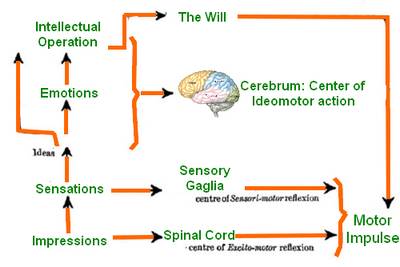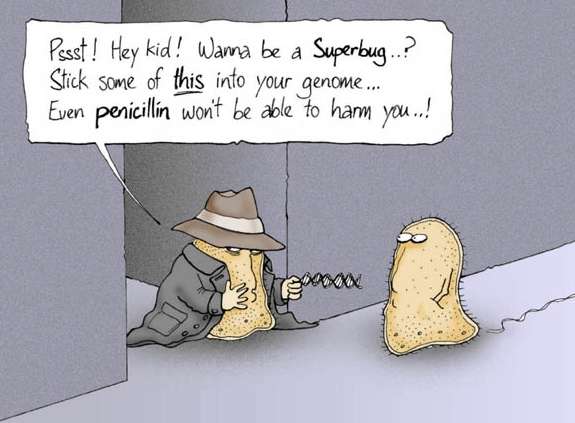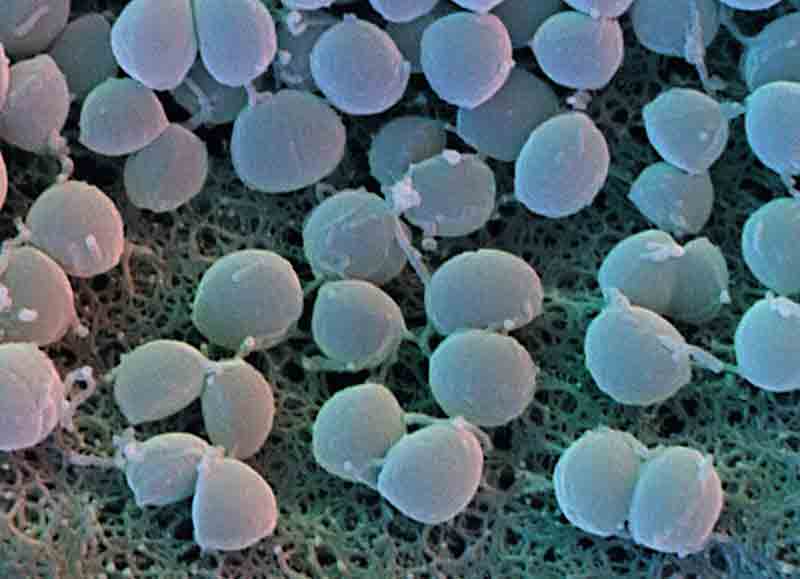Gas Gangrene : Pathogenesis and Lab diagnosis
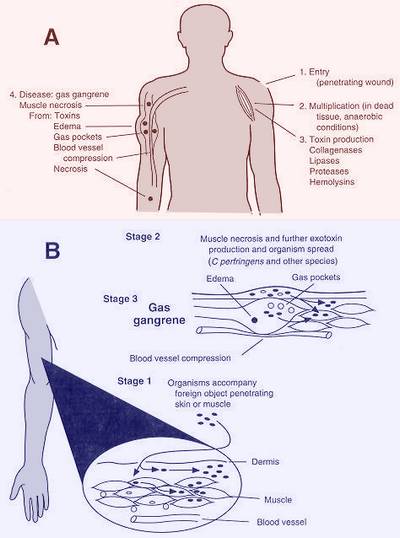
Gas gangrene also called as myonecrosis is a spreading wet gangrene of the muscles with profound toxaemia and shock. It is a most serious type of soft tissue infection caused predominantly by Clostridium Perfringes (large, rectangular, stout gram positive, anaerobic and capsulated non-motile bacillus with oval subterminal spore).
Pathogenesis of Gas gangrene:

1. Entry of bacteria in ischaemic wound (posttraumatic or postoperative) which provides anaerobic condition for the bacteria due to lack of blood supply.
2. Multiplication in the dead tissue
3. Exotoxins production
- Alpha toxin (lecithinase): lyses erythrocytes, platelets, leukocytes, endothelial cells, fibroblasts and muscle cells.
- Beta toxin: necrotizing
- Epsilon toxin (permease)
- Iota toxin: necrotizing
- Phi toxin: cellular degeneration and direct vascular injury
- Kappa toxin (collagenase): destruction of blood vessels and connective tissue
- Other toxins: Gamma, delta, theta, lambda, mu, nu toxins, neuraminidase, etc.
Local effects:
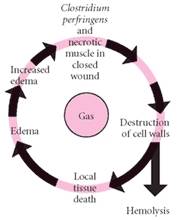
- Necrosis of muscle and subcutaneous fat and thrombosis of blood vessels
- Marked edema whihc further compromise blood supply to the region
- Gas production by fermentation of glucosein gas gangrene
Systemic effects:
- Hemolysis
- Cardiovascular abnormalities
4. Exotoxins further create more anaerobic conditions suitable for clostridium to proliferate and spread
5. Death may occur due to septic shock and unintentionally damaging effects of the immune response
Symptoms, Tests and Complications of Gas gangrene @ Healthline
Laboratory Diagnosis:
Specimens: wound swab, discharge and affected tissue
Direct smear: shows rectangular gram positive bacilli; spores are usually not seen
Culture: Specimen are incoulated into cooked meat media as well as in a blood agar media and the latter is incubated anaerobically for 48-72 hours. In blood agar medium there is hemolysis around the colony. The bacterial culture is used for Nagler reaction and biochemical tests.
Animal pathogenecity: For demonstration of toxigenecity of the strain, 0.1 ml of 24 hours culture of the bacteria in cooked meat broth is injected intramuscularly on the right thigh of a healthy guineapig. Animal dies within 24 hours. A control animal prior to test is to be included. On autopsy, the injected limb shows swelling with crepitation and the muscles appear pink. Bacteria can be recovered from heart and spleen of the animal.
References:
Medscape
A Textbook of Medical Microbiology by Chakraborty

